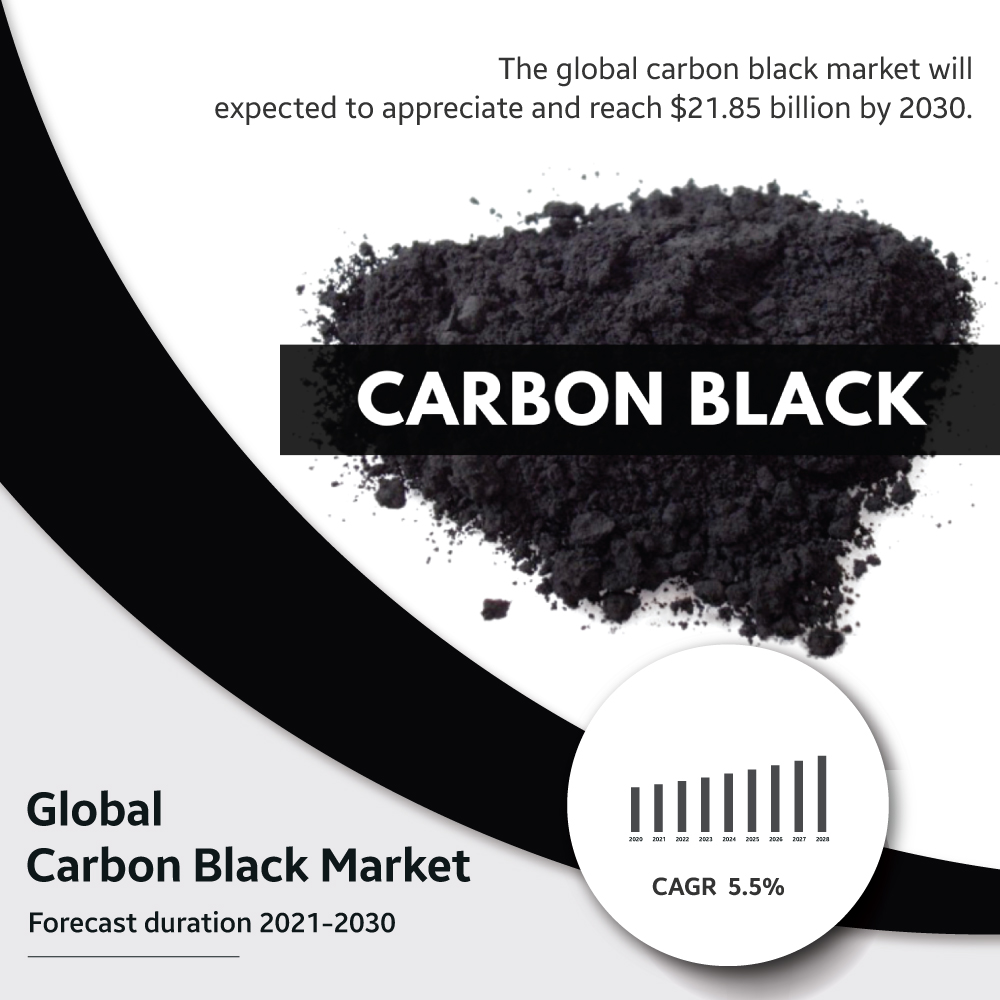In-Depth analysis of carbon black market

The mechanical and physical properties of the material are enhanced by carbon black, a type of para crystalline carbon that contains 95.05% pure carbon and increases the effectiveness of the finished product. Carbon black is utilized in the production of tires, mechanical rubber goods, plastics, printing inks, and toners. Due to its ability to absorb UV light and transform it into heat, its main application is in the insulation of wires and cables. It is also used to make a variety of rubber goods and colors.
The market worth of the carbon black market in 2021 was USD 13.45 billion and will reach USD 21.85 billion by 2030, growing at a 5.5% CAGR.
Market Dynamics
Drivers
The rubber industry’s explosive expansion is driving the market’s growth. The rubber industry is expanding swiftly due to increased demand from the building, consumer products, electronics, automotive, and rubber industries. Manufacturing wires and cables, tires, hoses, air springs, windows and doors, belts, and gaskets strongly rely on rubber products. Carbon black is usually utilized as a filler to reinforce and enhance the physical qualities of rubber composites. Additionally, it supports rubber’s volume and vulcanization.
It also dissipates heat away from the tire tread and belt region. Rubber things will last longer as a result of this.
Restraints
Hazardous gas emissions associated with production hamper the development of the carbon black market. The production process emits various hazardous gases, including nitrogen oxide, carbon dioxide, carbon monoxide, sulphur dioxide, and particulate matter, which reduces the demand for the product. These pollutants also impact the environment and human health. Inhaling these gases might cause chest tightness, nausea, dizziness, and headaches.
As a result, many governments have enacted stringent regulations. For instance, the International Agency for Research on Cancer raised concern over the product’s potentially harmful effects on people.
Opportunity
Growing consumer demand drives plastics production and propels market expansion. The main uses of the material are colors, conductive fillers, and particle reinforcers in polymers. Its rising demand is due to its superior strength, thermal conductivity, and antistatic properties. They also absorb UV rays, protecting plastic from fading, chalking, discoloring, and cracking.
Market Segmentation
The market segments for carbon black on the basis of the process are lampblack, furnace black, channel black, and acetylene black. The black furnace category was the biggest contributor to the market. The black furnace process for rubber strengthening is likely to increase market share.
This is a result of the widespread usage of tires, cables, and other standard-grade rubber-based goods in many industrial applications. The specialized grade segment will experience and foster a high growth rate due to the rising utilization in the plastic, inks, and coatings industries.
The market segment on the basis of application is tires, plastics, coatings, printing inks, and toners. The tire segment contributed the greatest share of the market. About 70% of carbon dark’s most well-known uses are as a pigment and reinforcement in tires for automobiles. Carbon black’s capacity to conduct heat away from the tire’s tread and belt region lowers thermal degradation and extends the useful life of tires. As the demand for vehicles increases, the automotive market will grow primarily. The major factor will result in an increase in the demand for carbon black, particularly for tires and seat belts.
Regional Insights
Asia Pacific was the highest regional market, with a revenue share of 40% in 2021. The main driver of this region’s growth is an increase in plastic consumption in important end-use industries like automotive, construction, conductive polymers, and packaging. During the forecast period, an increase in polymer production will be a significant factor in the expansion of the regional market, particularly in China, India, and Southeast Asian nations, including South Korea, Thailand, Malaysia, and Vietnam.
Key Players
- Continental Carbon Company
- Birla Carbon
- Omsk Carbon Group
- Tokai Carbon Co, Ltd.
- Atlas Organics Private Limited
- Cabot Corporation
- Orion Engineered Carbons GmbH
- Philips Carbon Black Limited
- International China Oak Investment Holdings Co., Ltd.
- Himadri Speciality Chemical Limited.
- Ralson
The market worth of the carbon black market in 2021 was USD 13.45 billion and will reach USD 21.85 billion by 2030, growing at a 5.5% CAGR. Increased tire production, expansion in the plastic and coating industries, and increased use of specialty carbon black to improve UV protection, pigmentation, conductivity, and antistatic properties in a variety of applications are the main drivers of this market.









